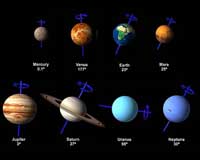 |
Paris, France (SPX) Aug 05, 2010 The UNESCO World Heritage Committee, at its 34th session in Brasilia, Brazil, has, for the first time, endorsed a study in science heritage. The thematic study on the Heritage Sites of Astronomy and Archaeoastronomy, prepared within the framework of the International Year of Astronomy 2009, presents an overall vision of astronomical heritage and attempts to identify some of the most outstanding examples that are of significance to everyone. The study is the result of a collaboration between the IAU Working Group on Astronomy and World Heritage and the International Council on Monuments and Sites (ICOMOS), the advisory body to UNESCO regarding cultural sites. The two organisations worked together to produce a detailed account of the rich history of astronomy around the world and the key sites for this heritage. The document, the full title of which is "Heritage Sites of Astronomy and Archaeoastronomy in the context of the World Heritage Convention", identifies broad issues in the assessment of cultural heritage relating to astronomy and includes examples of historical sites, some already on the World Heritage List or national Tentative Lists. This study was an integral part of the successful International Year of Astronomy 2009, whose activities in 148 countries reached millions of people and increased public understanding and appreciation of astronomy around the world. The study has several objectives. One is to gain a clearer picture of the character and composition of astronomical heritage around the world. Another is to identify just how to define this type of heritage in the context of the World Heritage Convention. The report details the main characteristics we should expect from an astronomical heritage site, and compares this to a representative sample of major heritage sites for astronomy around the world. Sixteen main topics are identified in the report, which covers human history from the Stone Age to the Space Age. "Astronomy represents a rich and significant part of humanity's shared cultural and natural heritage. Recognising this formally means that we can now identify and clarify astronomical value in the context of the World Heritage Convention," says Clive Ruggles, chair of the IAU's Working Group on Astronomy and World Heritage and co-author of the study. Anna Sidorenko-Dulom, Chair of the International Year of Astronomy 2009 Cornerstone project Astronomy and World Heritage and coordinator of the thematic initiative Astronomy and World Heritage at UNESCO World Heritage Centre adds: "Recently there has been a lot of interest in reviewing the relationship between the heritage of the sciences, the traditional knowledge of indigenous communities, and the World Heritage Convention. In this context, the new Thematic Study provides the foundation for assisting State Parties to harmonise their Tentative Lists at a thematic level and to prepare nominations, including comparative analyses explaining the importance of nominated properties in their national and international context. This raises the serious possibility of including astronomical sites of outstanding universal value in the World Heritage List." The study therefore has important practical implications for the effective implementation of the World Heritage Convention and for helping State Parties create credible nomination dossiers. But as well as its practical benefits for the management of world heritage, the study is a useful tool for helping to understand humanity's history.
Share This Article With Planet Earth
Related Links International Astronomical Union (IAU) Astronomy News from Skynightly.com
 400 Years, 7,500 Words: A History Of Planetary Science
400 Years, 7,500 Words: A History Of Planetary ScienceIthaca NY (SPX) Aug 02, 2010 In the four centuries since Galileo pointed his handheld cardboard-and-glass telescope skyward and Johannes Kepler described two laws of planetary motion, humans have come to know our solar system almost as intimately as we know our hometowns. So, consider the challenge in reviewing all of planetary science since 1610 ... in 4,000 words or fewer. Joseph A. Burns, professor of astronomy and ... read more |
|
| The content herein, unless otherwise known to be public domain, are Copyright 1995-2010 - SpaceDaily. AFP and UPI Wire Stories are copyright Agence France-Presse and United Press International. ESA Portal Reports are copyright European Space Agency. All NASA sourced material is public domain. Additional copyrights may apply in whole or part to other bona fide parties. Advertising does not imply endorsement,agreement or approval of any opinions, statements or information provided by SpaceDaily on any Web page published or hosted by SpaceDaily. Privacy Statement |